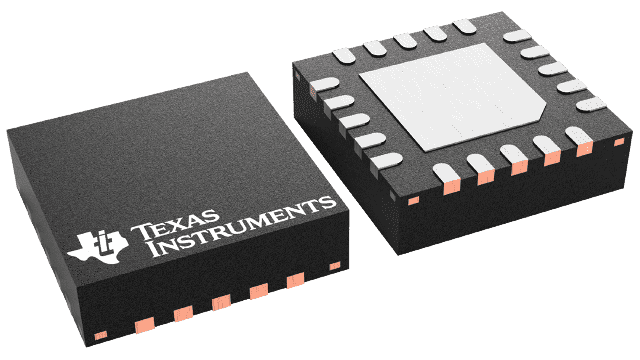Packaging information
| Package | Pins VQFN (RGR) | 20 |
| Operating temperature range (°C) -40 to 150 |
| Package qty | Carrier 3,000 | LARGE T&R |
Features for the TPS7A52-Q1
- Qualified for Automotive Applications
- AEC-Q100 Qualified for
Automotive Applications:
- Temperature Grade 1: –40°C ≤ TA ≤ +125°C
- HBM ESD Classification Level 2
- CDM ESD Classification Level C4A
- Extended Junction Temperature (TJ) Range: –40°C to +150°C
- Input Voltage Range:
- Without BIAS: 1.4 V to 6.5 V
- With BIAS: 1.1 V to 6.5 V
- Adjustable Output Voltage Range: 0.8 V to 5.2 V
- Low Dropout: 115 mV (max) at 2 A With BIAS
- Output Voltage Noise: 4.4 µVRMS
- 1% (max) Accuracy Over Line, Load, and Temperature With BIAS
- Power-Supply Ripple Rejection:
- 40 dB at 500 kHz
- Adjustable Soft-Start Inrush Control
- Open-Drain, Power-Good (PG) Output
- Packages:
- 3.5-mm × 3.5-mm, 20-Pin VQFN
- 4-mm × 4-mm, 20-Pin VQFNP With Wettable Flanks and High CTE (12 ppm/°C) Mold Compound
Description for the TPS7A52-Q1
The TPS7A52-Q1 device is a low-noise (4.4 µVRMS), low-dropout linear regulator (LDO) capable of sourcing 2 A with only 115 mV of maximum dropout. The device output voltage is adjustable from 0.8 V to 5.2 V using an external resistor divider.
The combination of low-noise (4.4 µVRMS), high-PSRR, and high output current capability makes the TPS7A52-Q1 ideal to power noise-sensitive components such as those found in radar power and infotainment applications. The high performance of this device limits power-supply-generated phase noise and clock jitter, making this device ideal for powering RF amplifiers, radar sensors, and chipsets. Specifically, RF amplifiers benefit from the high-performance and 5.0-V output capability of the device.
For digital loads [such as application-specific integrated circuits (ASICs), field-programmable gate arrays (FPGAs), and digital signal processors (DSPs)] requiring low-input voltage, low-output (LILO) voltage operation, the exceptional accuracy (1% over load and temperature), remote sensing, excellent transient performance, and soft-start capabilities of the TPS7A52-Q1 provides optimal system performance.
The versatility of the TPS7A52-Q1 makes the device a component of choice for many demanding applications.
